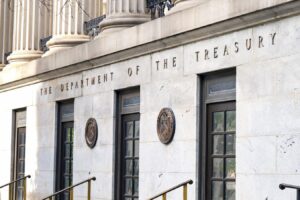The stock market fell on Tuesday after tensions increased in the Middle East. This is one of, if not the most, news driven markets in recent history. Stocks are reacting a lot to headlines these days, and Tuesday was no exception. Trading was busier than usual for popular exchange-traded funds like the QQQ which tracks the Nasdaq 100 and the S&P which follows the S&P 500. Tuesday marked the seventh “distribution day” for these ETFs—a sign that big institutional investors are selling stocks.
The big news on Wednesday will likely come from the Federal Reserve. Let’s break down what’s happening and why the market might still have room to shine.
Trouble In The Middle East Shakes Things Up
Bad news from the Middle East began last week but increased this week after President Donald Trump hinted the U.S. might get involved. When tensions rise in that region, investors often worry about things like higher oil prices or disruptions to global trade. Two big factors that could send stocks lower. The Dow Jones Industrial Average, S&P 500, and Nasdaq Composite all ended the day lower. A measure of market fear, called the VIX, rose, showing investors were on edge. Investors are also looking at energy prices. With oil prices climbing above $70 a barrel. Remember, higher energy prices acts as an indirect tax on both consumers and businesses.
More Distribution Days: A Signal to Watch
Tuesday’s heavy trading in the QQQ and SPY ETFs marked their seventh distribution day in recent weeks. A distribution day happens when an ETF or index falls and more shares are traded than the day before, suggesting big institutional investors are selling stocks. Normally, under five distribution days is considered normal in a few week period. But when the number of distribution days increases, that usually increases the odds the market might pullback. For now, it’s a yellow flag, not a red one. It is important to note that volume on the S&P 500 and Nasdaq Composite were lower on Tuesday and that is an encouraging sign.
The Market’s Still Close To Record Highs
Despite the gloomy headlines, here’s some good news: the S&P 500 and Nasdaq 100 are only about 2-3% below their all-time highs. That’s a very bullish sign. Why? Because it is not the news that matters but how the market reacts to the news. With all the negative headlines out there, the market is holding up remarkably well. Right now, the S&P 500 and Nasdaq are “only” 2-3% below their record highs. Which means, one or two good days and we can breakout of this long trading range and hit all time highs. This strength suggests stocks are still in a bullish mood—meaning they’re more likely to go up than down as of right now. That can easily change if we get more distribution.
Fed Day: What Will the Central Bank Say?
All eyes are on the Federal Reserve’s meeting on Wednesday, June 18, 2025, with an announcement set for 2 p.m. ET. Most people expect the Fed to keep interest rates steady. But what investors really care about is what Fed Chair Jerome Powell says afterward and what the Fed’s “dot plot” shows. The dot plot is a chart that reveals what Fed officials think interest rates will do in the future. That can change but it is a good sign of what the Fed is thinking right now.
Recently, the Fed predicted two rate cuts this year, which gave investors hope for lower interest rates. If the Fed sticks to that plan, it could calm, or even boost, markets. But if they hint at fewer cuts—or none at all—stocks might take a hit. Investors are also curious about how Powell will handle questions about pressure from the White House to cut rates to boost the economy.
What It All Means For Investors
The market is range-bound right now and remains perched below its record high. Even though we had big swings this year, the market is trading near where it was six months ago. With Middle East tensions and the Fed’s decision in the spotlight, the stock market can go either way. If Powell and the Fed are dovish (more rate cuts, not less), stocks could easily rip higher. On the other side, if the Fed is hawkish (not going to cut -or do the unthinkable right now and hint at raising rates), we can easily see more selling.
What To Watch Next
Investors should keep an eye on a few things. First, will we breakout and hit new highs or get more distribution days for the QQQ & SPY? Second, watch the Middle East situation—especially oil prices, which impact the economy. Third, the Fed’s announcement on Wednesday. Beyond Powell’s words and the dot plot, the Fed’s updated forecasts for economic growth, inflation, and jobs will give more clues about where things are headed.
Conclusion
For now, caution makes sense. We haven’t broken out to new all time highs yet. If/when we do, the environment will get a lot more bullish. Until then, we have seven distribution days for the QQQ and SPY which is a concerning sign. At the end of the day, even though we have a lot of negative headlines from trade to possible war, etc, it is very encouraging to see that the S&P 500 and Nasdaq 100 are just 2% to 3% below their record highs. One thing’s clear: in this news-driven market, a single positive headline could send stocks to new highs. If we don’t breakout, we can easily have another leg down. It’s never a dull moment on Wall Street.
Read the full article here
















